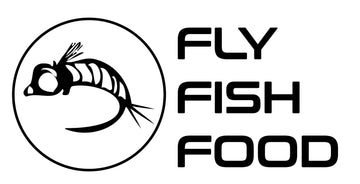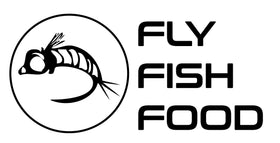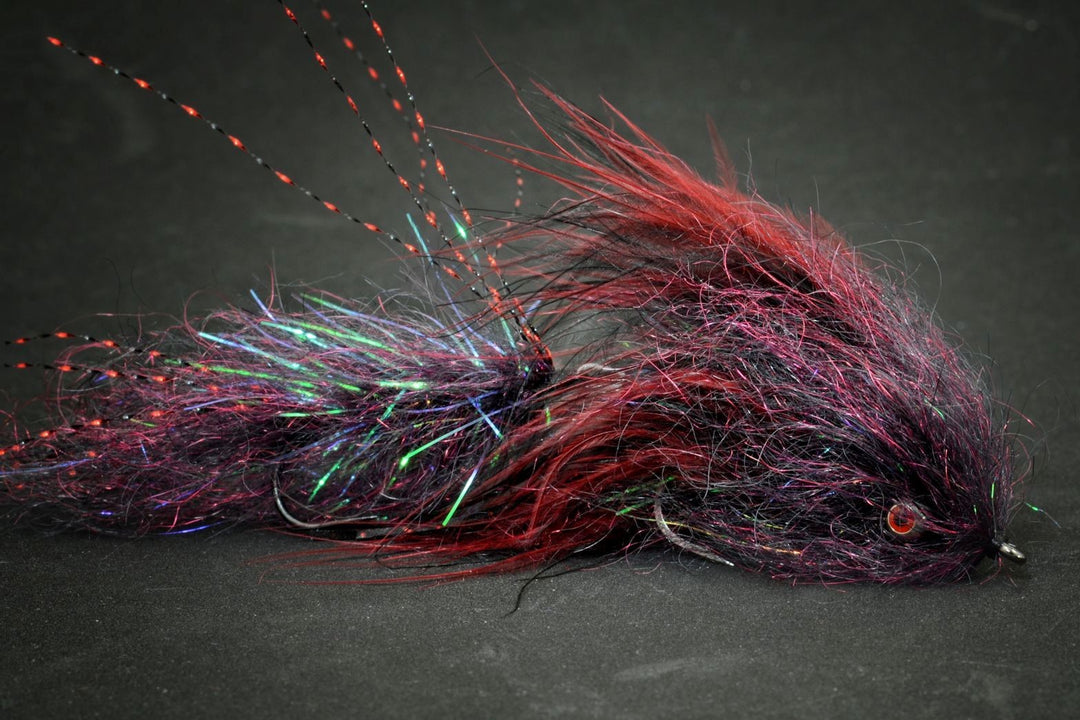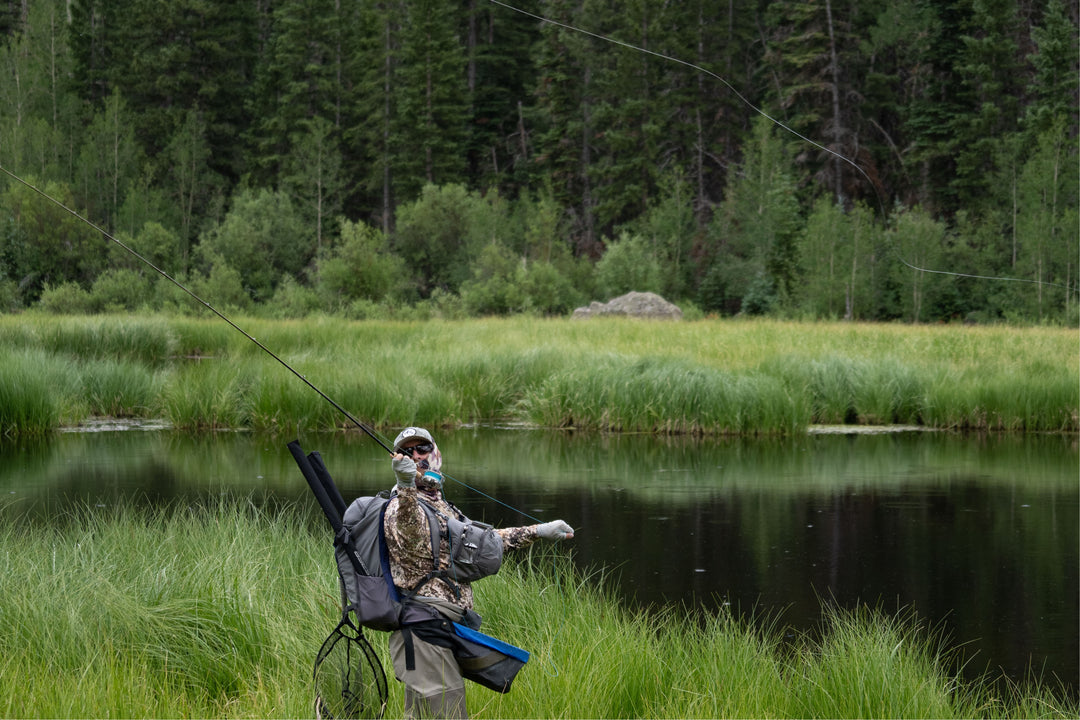Roaring Fork River Fly Fishing Report - August 8/23/2025
ROARING FORK RIVER FLY FISHING REPORT
Western Colorado — Aspen to Glenwood Springs
Current River Conditions
Typical current range (upper/mid sections): ~100–400 CFS (gauges vary by reach).
Water Clarity: Clear — excellent sight fishing, especially early and late.
Current: mid‑50s °F (~54–57°F)
Trend: Warmest afternoons, cool mornings; trout holding deeper in warmest pockets.
Forecast for the coming week: generally warm afternoons with afternoon breeze; keep an eye on mountain thunderstorms (sudden dirtying possible).
Highway 82 accesses most popular floats and wading sections (Aspen → Basalt → Carbondale). Trailheads and ramps generally open; parking tighter on weekends.
Hatch Chart & Insect Activity (what's on the water)
| Insect | Size | Activity Level | Prime Time |
|---|---|---|---|
| Midges | #18–24 | High ⭐⭐⭐⭐ | All day (best in calm pockets) |
| Blue‑Winged Olives (BWO) | #18–22 | Moderate ⭐⭐⭐ | Morning → mid‑day |
| Pale Morning Duns (PMD) | #16–18 | Moderate ⭐⭐⭐ | Late morning |
| Caddis | #14–18 | Light → Moderate ⭐⭐ | Evening and along structure |
| Stoneflies / Golden Stone | #6–10 | Low → Occasional ⭐⭐ | Afternoon on riffles |
| Green Drakes | #10–12 | Emerging (watch next 1–2 weeks) ⭐⭐ | Warmest mid‑late August afternoons (variable by elevation) |
Recommended Flies (patterns that match what's hatching)
Below are field‑tested choices for the Roaring Fork right now — links go to available tied patterns for quick reference. Start with the dries and a skinny dropper; when fish are quiet tighten up to small, tungsten nymphs and tiny midges.
Dry Flies & Emergers
- Libby's Salmonfly — giant attractor for any big stonefly activity (sizes #4–8).
- Parachute Adams — universal dry when you just need an attractor or to imitate mixed mayflies.
- Parachute — Blue Wing Olive — a precise BWO match for fussy rises.
- Stealth Link Mercer — PMD and Split Case — PMD — use when PMDs are on the wing or as emergers under an indicator.
- Corn‑fed Caddis (CDC Olive/Tan) — skitter them along foam and current seams at dusk.
- Antonio's Adult BWO — excellent realistic adult BWO pattern.
Nymphs & Subsurface
- Tungsten Pat's Rubber Legs — top pick for stonefly/nymph presentations in faster water.
- Pheasant Tail — Tungsten — classic go‑to for mayfly nymphs.
- Tungsten Split Case — PMD — deadly through seams and pockets.
- Black Zebra Midge (TBH) — essential for midge webs and deep slow tails.
- Egan's Warrior Perdigon — great tight, fast drifts for picky trout in clear flows.
- Soft Hackle Pheasant Tail Jig — use for emerger action and natural movement near the film.
Streamers & Big Patterns
- Sculpzilla — Natural / Olive — copy the sculpin signature in the Roaring Fork's deeper runs and behind boulders.
- Coffey's Articulated Sparkle Minnow — Sculpin #4 — articulated action for larger trout.
- Cheech Leech — Black / Black‑Red — great profile for slow water and undercut bank strikes.
Tactics & How to Catch Fish
- Midday → afternoon: switch to a dry/dropper (dry matching PMD/BWO or skittered caddis) — present the dry first, let the dropper swing naturally.
- When fish are rising: shorten leader, go to 12–14' tapered leaders with 5–7X tippet for tiny BWOs and midges.
- Streamer work: slow, figure‑8 or short strips around structure; use a sink‑tip when fishing deep runs.
- Presentation matters: with clear water and low flows, longer leaders, stealthy wading, and single‑fly accurate casts outperform brute force.
Local Notes, Regulations & Safety
The Roaring Fork has section‑specific rules (seasonal closures, special catch & release or size limits in places). Always check Colorado Parks & Wildlife before you fish for the most current regulations.
Local shops and guides (Aspen/Basalt area) report excellent fishing but note fish are selective — ask the shop for same‑day hatch updates and likely hot blows/holes.
Quick Gear Checklist
- Rod: 9' 4‑ or 5‑weight for most dry/dropper situations; 6‑7 weight for streamer work.
- Leaders: 9–12' tapered leaders; extra 4X–7X tippet spools for small dries.
- Flies: selection above (midges, BWOs, PMDs, small caddis, tungsten nymphs, sculpin streamers).
- Terminal tackle: split shot, small indicators, fluorocarbon tippet (6–8 lb) for low water clarity.
- Wading: neoprene booties or felt (depending on conditions), wading staff for rocky entries.
Forecast & What to Watch
Expect stable, clear conditions through the week unless mountain storms produce sudden runoff. If a thunderstorm grays the river, move to tailouts and run deep nymph rigs until clarity returns. Keep an eye on the Green Drake forecast — a big hatch window may open in the coming days in lower‑elevation stretches.




